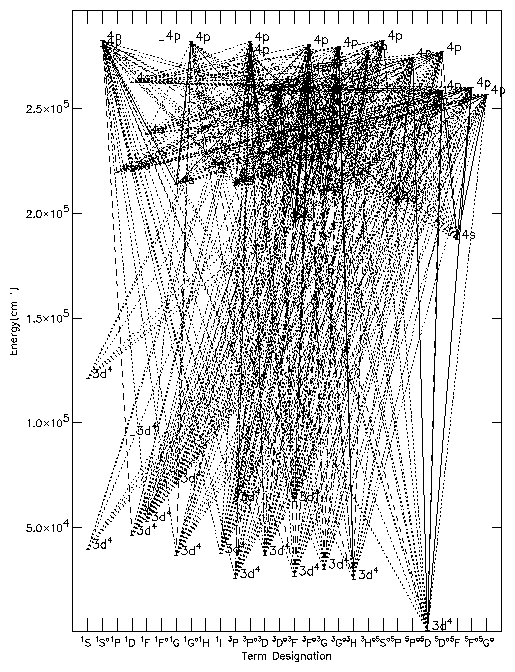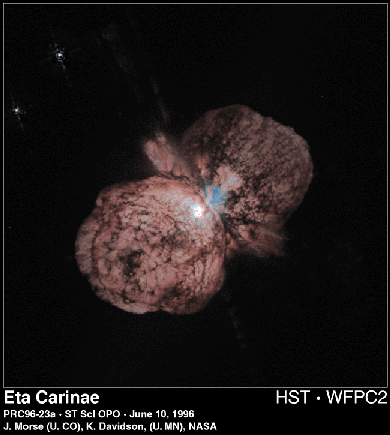 |
|
|
Astrophysics
|
|
|
|
projects, downloads, papers |
||
|
projects, downloads, papers |
Diagnostics |
|
|---|---|---|
Theory |
||
Applications |
||
|
publications |
 |
|
The main focus of the working group is the investigation of Hot Stars, particularly with regard to their moving atmospheres or stellar winds. The primary objective with respect to that are model simulations and the computation of synthetic spectra for O/B Stars, Central Stars of Planetary Nebulae and Supernovae.
(references given below are to be found in this review too)
First of all we have to clarify what is meant by UV spectral diagnostics. This is best illustrated by the UV spectrum of one of the brightest massive O stars, the O4 I(f) supergiant z Puppis. As is shown in the figure below, expanding atmospheres have a pronounced effect on the emergent spectra of hot stars - especially in the UV-part. The signatures of outflow are clearly recognized by the blue-shifted absorption and red-shifted emission in the form of the well-known P Cygni profiles. It is quite obvious that these kind of spectra contain information not only about stellar and wind parameters, but also about abundances. Thus, in principle, all fundamental parameters of a hot star can be deduced from a comparison of observed and synthetic spectra.
Spectral Observations:
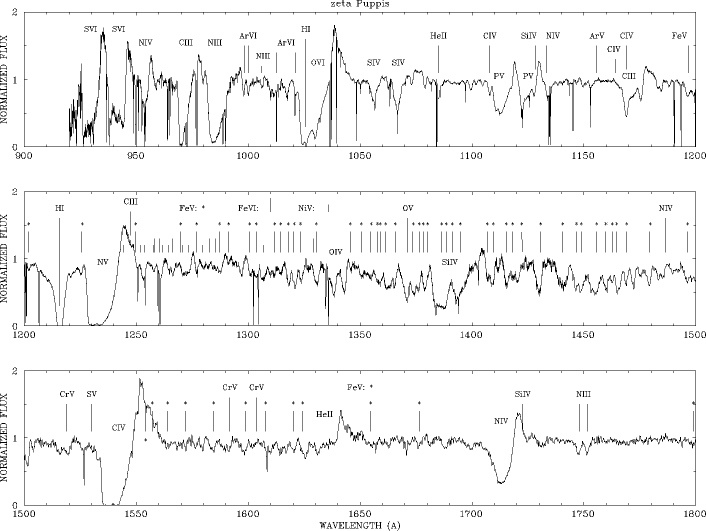 |
Merged spectrum of Copernicus and IUE UV high-resolution observations of the O4 I(f) supergiant zeta- Puppis (900-1500 Å: Morton & Underhill 1977; 1500-1800 Å: Walborn et al. 1985). The most important wind lines of the light elements are identified and marked. Also marked are the large number of wind-contaminated lines of the iron group elements (e.g., Fe V) which are especially present between 1250 and 1500 Å. (Figure from Pauldrach et al. 1994b).
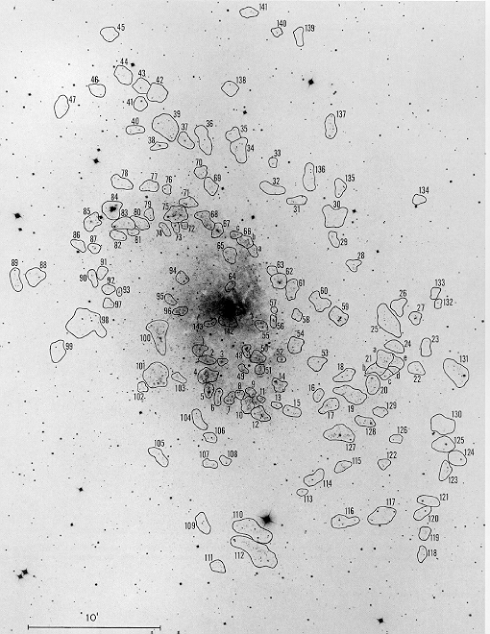
Observations of the winds from hot stars performed in the Galaxy (and in external galaxies: the Magellanic Clouds, M31, M33 - shown below, figure from Humphreys & Sandage, 1980, ApJS 44, 319, identification of 143 associations).
Model simulations and Synthetic Spectra:
It turned out to be a long road to reproduce most of the important observed individual line features in the UV. This required a lot of effort in atomic physics, in improved NLTE multilevel radiative transfer, and in spectrum synthesis techniques. As is shown in the figure below the calculated synthetic spectrum is quite well in agreement with the IUE and the Copernicus observed spectra. Moreover, the stellar and wind parameters of this object are confirmed by the model on which the synthetic spectrum is based, and the abundances of C, N, O, P, Si, S, Fe, and Ni have been determined. It is therefore concluded that the present method of quantitative spectral UV analysis of Hot Stars leads to models which can be regarded as being realistic.
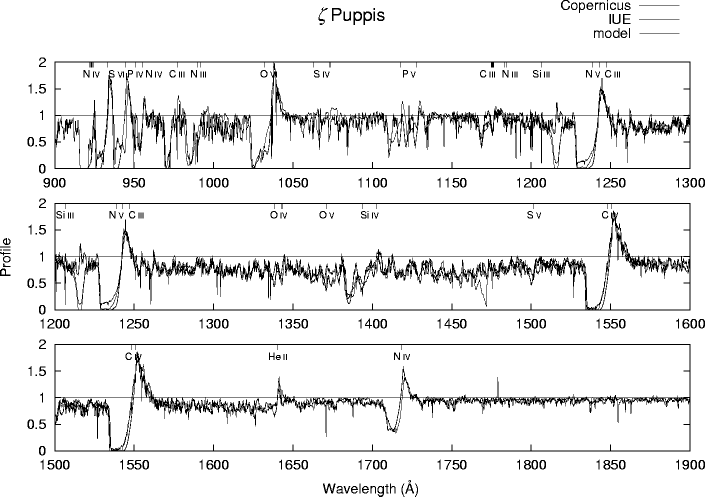 |
Calculated and observed UV spectrum for z Puppis. The observed spectrum shows the Copernicus and IUE high-resolution observations, and the calculated state-of-the-art spectra represent the final models of Pauldrach et al. 2001, 2003.
Basic outline of the theoretical method:
The basis of our approach in constructing detailed atmospheric models for Hot Stars is the concept of homogeneous, stationary, and spherically symmetric radiation driven winds, where the expansion of the atmosphere is due to scattering and absorption of Doppler-shifted metal lines. Although these approximations seem to be quite restrictive, it has already been shown that the time-averaged mean of the observed UV spectral features can be described correctly by such a method (Pauldrach et al. 1994, 1994b).
|
|
Schematic sketch of the basic equations and the non-linear system of integro-differential equations that form the basis of stationary models of hot star atmospheres - for details see text. Figure from Pauldrach et al. 1994b).
Winds from hot stars (here a numerical simulation of the density distribution of a rapidly rotating wind) are driven by radiative line acceleration in
thousands of metal lines close to flux maximum.
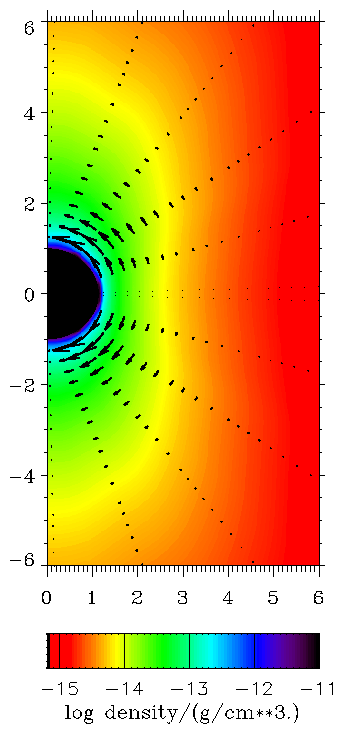
Since the winds are driven by radiative acceleration in metal lines, the stellar metal abundance affects not only the strenght, but also the structure of the spectral lines. As an example for the multitude of driving lines, we show here the Grotrian diagram of the most important levels in FeV. Solid, dashed and dotted line-style corresponds to strong, intermediate and low oscillator-strength of the indicated radiative transition. Note the large number of low-lying meta-stable levels in iron (-like) ions.
